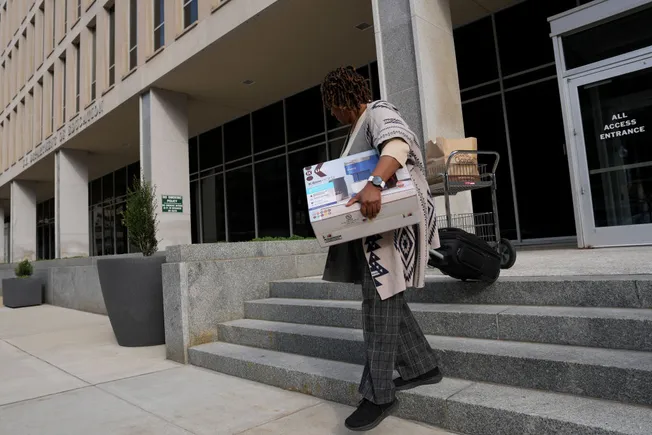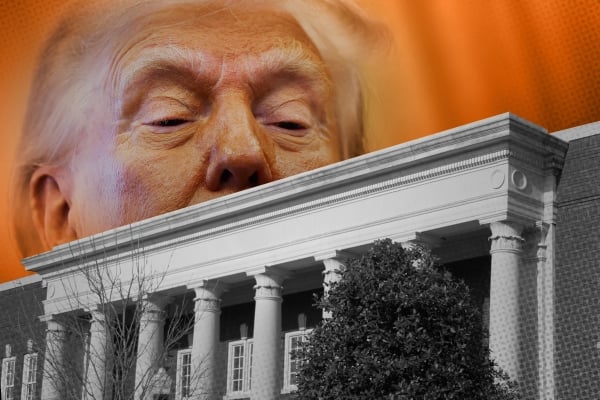For the third year in a row, the English higher education sector’s collective financial performance is in decline.
That is the conclusion of the latest annual assessment of the sector’s financial sustainability from the Office for Students (OfS), based on finance returns for 2023-24.
Overall, after stiff warnings this time last year about the risks of system-wide provider deficits if projected student number growth failed to materialise, OfS says that many providers are taking steps to manage their finances, by reducing costs and downgrading recruitment growth projections. It remains unlikely, says OfS, that a large provider will become insolvent in the coming financial year.
But 43 per cent of providers are forecasting a deficit for the current financial year 2024–25, and there is an overall decline in overall surplus and liquidity – albeit with the expectation of growth in the years ahead. While larger teaching-intensive and medium sized providers were more likely to report a deficit, there is also quite a lot of variation between providers in different groups – meaning that institution type is not a reliable guide to financial circumstances.
Recruitment woes
Student recruitment is the most material driver of financial pressure, specifically, a home and international student market that appears insufficient to fill the number of places institutions aspire to offer. The broad trend of institutions forecasting student number growth in hopes of offsetting rising costs – including national insurance and pension contributions – makes it unlikely that all will achieve their ambitions. There’s evidence that the sector has scaled back its expectations, with aggregate forecast growth until 2027–28 lower than previous forecasts. But OfS warns that the aggregate estimate of an increase of 26 per cent in UK entrants and 19.5 per cent in non-UK entrants between 2023–24 and 2027–28 remains too optimistic.
Questioned further on this phenomenon, OfS Director of Regulation Philippa Pickford noted that there is significant variation in forecasts between different providers, and that given the wider volatility in student recruitment it can be really quite difficult to project future numbers. The important thing, she stressed, is that providers plan for a range of possible scenarios, and have a mitigation plan in place if projections are not achieved. She added that OfS is considering whether it might give more information to providers upfront about the range of scenarios it expects to see evidence of having been considered.
Storing up trouble
While the focus of the financial sustainability is always going to be on the institutional failure scenario, arguably an equally significant concern is the accumulation of underlying structural weaknesses caused by year-on-year financial pressures. OfS identifies risks around deferral of estates maintenance, suspension of planned physical or digital infrastructure investments, and a significant increase in subcontractual (franchising) arrangements that require robust governance.
All this is manifesting in some low-key emergency finance measures such as relying on lending to support operating cashflow where there is low liquidity at points in the year, selling assets, renegotiation of terms of covenants with lenders, or seeking injections of cash from donors, benefactors or principal shareholders. Generally, and understandably, the finance lending terms available to the sector are much more limited than they have been in the past and the cost of borrowing has risen. The general increases in uncertainty are manifest in the increased work auditors are doing to be able to confirm that institutions remain a “going concern.” Such measures can address short-term financial challenges but in most cases they are not a viable long term strategy for sustainability.
OfS reiterates the message that providers are obligated to be financially sustainable while delivering a high quality student learning experience and following through on all commitments made to students – but it’s clear that frontline services are in the frame for cuts and/or that there is a limit to the ability to reduce day-to-day spending or close courses even when they are loss-making if there is likely to be an impact on institutional mission and reputation. Discussions between OfS and directors of finance point to a range of wider challenges around increased need for student support, the difficulty of recruiting and retaining staff, the increasing costs of conducting research, and shifts in the student accommodation rental market. Some even pointed to the cost of investment in AI-detection software.
The future is murky
The bigger picture points to long term (albeit unpredictable) shifts in the underlying financial model for HE. Philippa Pickford’s view is that institutions may need to shift from taking a short-term view of financial risks to a longer-term horizon, and will need to grapple with what a sustainable long term future for the institution looks like if the market looks different from what they have been used to. Deferral of capital investment, for example, may keep things going for a year or two but it can’t be put off indefinitely. There’s a hint in the report that some institutions may need to invest in greater skills, expertise and capacity to understand and navigate this complicated financial territory – and OfS is taking an increased interest in multi-year trends in financial performance, estates data and capital investment horizons in its discussions with providers.
The situation remains, however, that OfS is primarily empowered to monitor, discuss, convene and, if necessary, issue directives relating to student protection. Activity of this nature has ramped up considerably in the past year, but financial sustainability remains, at base, individual providers’ responsibility – and system-level intervention on things like changing patterns of provision, or management of the wider impact of institutional insolvency, nobody in particular’s. Government is, of course, aware of the problem but has not yet given a steer on whether its upcoming HE reform measures, expected to be published in the summer after the spending review, will grasp the nettle in delivering the support for transformation the sector hopes to see.
OfS has now said that it is talking to government to put forward the view that there should be a special administration regime for higher education. This signals that while the immediate risks of institutional closure or “disorderly market exit” are low, the pressures on a small number of institutions remain considerable. On the assumption of little or very modest changes in the funding model in the upcoming spending review, and ongoing competitive pressures, there will almost inevitably be losers.




